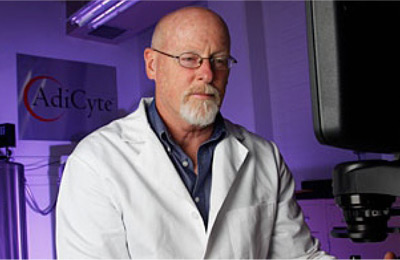
Uses of Cord Blood Stem Cells
These immunomodulatory effects are seen throughout varying sources of MSC; bone marrow, adipose, and placental, but the greatest effects in reductions in negative inflammatory responses come from MSC’s derived from placental tissues; therefore, banking cord tissue has proved to be of great necessity for future clinical benefits.
Cord Tissue
Usage of Cord Tissue for regenerative medicine has become widely popular in the therapeutic field. Cord tissue is in fact the Umbilical Cord that connects the fetus to the placenta, feeding the new born with nutrients and oxygen. Within the Umbilical cord lies a mucoid connective tissue called Wharton’s Jelly, which contains an abundance of cells called Mesenchymal Stromal Cells (MSC). These cells are one of the primary drivers of the regenerative field with hundreds of clinical trials studying the varying benefits of Mesenchymal Stromal Cells. These cells are unique in that they have the ability to differentiate into various tissue types; cartilage, bone, adipose, as well as cardiac tissue and some neural cells giving them an incredible potential for future therapies. Beyond the ability to regrow new tissues, these cells also have the ability for immunomodulatory effects, which benefits many areas including that of autoimmune and chronic inflammatory diseases.

We at CSCC are committed to the health of your family. We want ALL expectant parents to have access to this biological resource. We are invested in you and your family. The father of stem cell banking, Dr. David Harris, is leading our cord blood banking effort. Dr. Harris started the first cord blood bank in the USA in 1992.

Unique Applications for Placental Tissue
The cells are most commonly administered intravenously or intramuscularly. Lastly, the amnion from the placenta can be used as a scaffold or patch for use in burn and wound patients, as well as, those suffering from diabetic ulcers.
Placental Tissue
Placental tissue banking gives one the opportunity to store cells that may have unique applications quite different from those for cord or placental blood. Cord and placental blood are predominantly used for transplants where hematopoietic reconstitution (the rebuilding of the blood cells) is needed. Tissue from the placenta, on the other hand, contains abundant MSC and MSC-like cells which are being studied in regenerative medicine. MSC and MSC-like cells are currently being studied in variety of clinical settings for conditions such as Crohn’s disease, type 1 and type 2 diabetes, heart failure, diabetic foot ulcer, amyotrophic lateral sclerosis (ALS, or Lou Gehrig disease), and rheumatoid arthritis.
Donate your placenta to CSCC and we will bank a portion of the mother’s side for free.
(annual storage fee will apply after 1st year storage)
